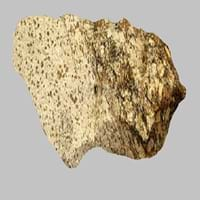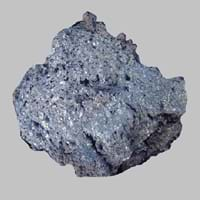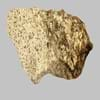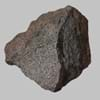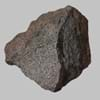Definition
Charnockite is a variety of granite containing minerals like orthopyroxene, quartz, and feldspar
Picrite is a variety of high-magnesium olivine basalt that is very rich in the mineral olivine
Origin
Tamil Nadu, India
Hawaii Islands
Discoverer
T. H. Holland
Unknown
Etymology
From Job Charnock, an administtrator of East India Company
From Greek pikros bitter + -ite, 19th century
Class
Igneous Rocks
Igneous Rocks
Sub-Class
Durable Rock, Hard Rock
Durable Rock, Hard Rock
Other Categories
Coarse Grained Rock, Opaque Rock
Fine Grained Rock, Opaque Rock
Texture
Granular
Earthy, Rough
Color
Black, Grey, Orange, Pink, White
Black, Brown, Colourless, Green, Grey, Pink, White, Yellow
Durability
Durable
Durable
Scratch Resistant
Yes
Yes
Appearance
Veined or Pebbled
Rough and Shiny
Interior Uses
Bathrooms, Countertops, Decorative Aggregates, Entryways, Floor Tiles, Homes, Hotels, Kitchens, Stair Treads
Countertops, Decorative Aggregates, Homes, Interior Decoration
Exterior Uses
As Building Stone, As Facing Stone, Bridges, Paving Stone, Garden Decoration, Office Buildings, Resorts
As Building Stone, As Facing Stone, Garden Decoration, Paving Stone
Other Architectural Uses
Curbing
Curbing
Construction Industry
As Dimension Stone
As a Sintering Agent in Steel Industry to process Iron Ore, Cement Manufacture, for Road Aggregate, Manufacture of Magnesium and Dolomite Refractories, Roadstone, Used for flooring, stair treads, borders and window sills.
Medical Industry
Not Yet Used
Not Yet Used
Antiquity Uses
Artifacts, Monuments, Sculpture, Small Figurines
Artifacts, Monuments, Sculpture
Commercial Uses
Curling, Gemstone, Laboratory bench tops, Tombstones
As a Feed Additive for Livestock, As armour rock for sea walls, Metallurgical Flux, Pottery, Source of Magnesia (MgO)
Features
Available in Lots of Colors and Patterns, It is One of the Oldest, Strongest and Hardest Rock
Host Rock for Lead
Archaeological Significance
Famous Monuments
Data Not Available
Data Not Available
Famous Sculptures
Data Not Available
Data Not Available
Pictographs
Not Used
Not Used
Petroglyphs
Not Used
Not Used
Formation
Charnockite is an intrusive igneous rock which is very hard and is formed due to weathering of existing rocks.
Picrite is a fine-grained, hard rock which is a type of metasomatite, essentially altered basalt. It forms with or without crystallization, either below the surface as intrusive rocks or on the surface as extrusive rocks.
Mineral Content
Amphibole, Biotite, Feldspar, Hornblade, Micas, Muscovite or Illite, Olivine, Plagioclase, Pyroxene, Quartz
Biotite, Olivine, Plagioclase, Pyrrhotite
Compound Content
Aluminium Oxide, CaO, Iron(III) Oxide, FeO, Potassium Oxide, MgO, MnO, Sodium Oxide, Phosphorus Pentoxide, Silicon Dioxide, Titanium Dioxide
Al, CaO, Carbon Dioxide, Mg, MgO
Types of Metamorphism
Burial Metamorphism, Contact Metamorphism, Regional Metamorphism
Burial Metamorphism, Cataclastic Metamorphism, Impact Metamorphism, Regional Metamorphism
Types of Weathering
Biological Weathering
Biological Weathering
Types of Erosion
Chemical Erosion, Water Erosion, Wind Erosion
Chemical Erosion, Coastal Erosion, Glacier Erosion, Sea Erosion, Water Erosion, Wind Erosion
Grain Size
Coarse Grained
Fine Grained
Fracture
Not Available
Uneven
Streak
White
White, Greenish White or Grey
Porosity
Very Less Porous
Less Porous
Luster
Not Available
Subvitreous to Dull
Compressive Strength
Not Available
Cleavage
Not Available
Imperfect
Toughness
Not Available
2.1
Specific Gravity
Not Available
2.75-2.92
Transparency
Opaque
Opaque
Density
2.6 g/cm3
1.5-2.5 g/cm3
Specific Heat Capacity
Not Available
Resistance
Heat Resistant, Wear Resistant
Heat Resistant
Deposits in Eastern Continents
Africa
East Africa, Ethiopia, Madagascar, Morocco, Mozambique
South Africa
Europe
Albania, Romania, Scotland, United Kingdom
Iceland
Others
Not Yet Found
Not Yet Found
Deposits in Western Continents
North America
USA
Canada, USA
South America
Brazil, Colombia, Venezuela
Brazil
Deposits in Oceania Continent
Australia
Central Australia, Western Australia
Not Yet Found
All about Charnockite and Picrite Properties
Know all about Charnockite and Picrite properties here. All properties of rocks are important as they define the type of rock and its application. Charnockite and Picrite belong to Igneous Rocks.Texture of Charnockite is Granular whereas that of Picrite is Earthy, Rough. Charnockite appears Veined or Pebbled and Picrite appears Rough and Shiny. The luster of Charnockite is not available while that of Picrite is subvitreous to dull. Charnockite is available in black, grey, orange, pink, white colors whereas Picrite is available in black, brown, colourless, green, grey, pink, white, yellow colors. The commercial uses of Charnockite are curling, gemstone, laboratory bench tops, tombstones and that of Picrite are as a feed additive for livestock, as armour rock for sea walls, metallurgical flux, pottery, source of magnesia (mgo).
